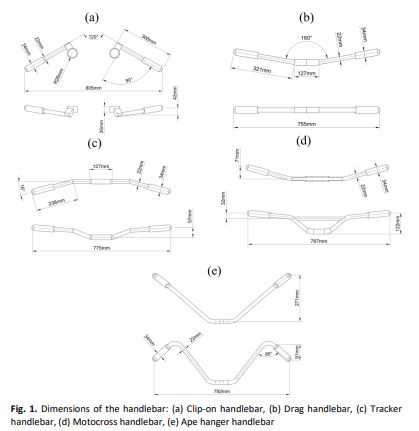Drag and Lift Characteristics of Different Handlebars and Front-Fairing Combinations Used in Two-Wheelers: A CFD Approach
DOI:
https://doi.org/10.37934/arfmts.93.1.136147Keywords:
Two-wheelers, handle-bars, aerodynamics, drag, lift, front fairingAbstract
Two-wheelers with a total industrial volume of 50 million units over the past decade are one of the most popular modes of transport. Two-wheelers irrespective of the fueled engine or electric variant, are steered by means of the Handle-bar. The handlebar type and quality affects the operational characteristics of the two-wheeler as well as the physical fatigue of the rider. Handle-bar designs affect the parameters like ergonomics, maneuverability, rider comfort, and aerodynamics. The target of this study was to analyze the aerodynamic response of different handlebar types with and without the front fairings. To simulate the flow and optimize the streamline, Ansys-CFX® tool was used. In the study, focus was given to the frontal area of the two-wheeler without the rider. The key metrics considered for the aerodynamic analysis included the pressure distribution, velocity distribution, drag and lift coefficients. From the aerodynamic studies, the drag handlebar was found to offer the minimum drag while the clip-on handlebar offered the lowest lift.
Downloads
































